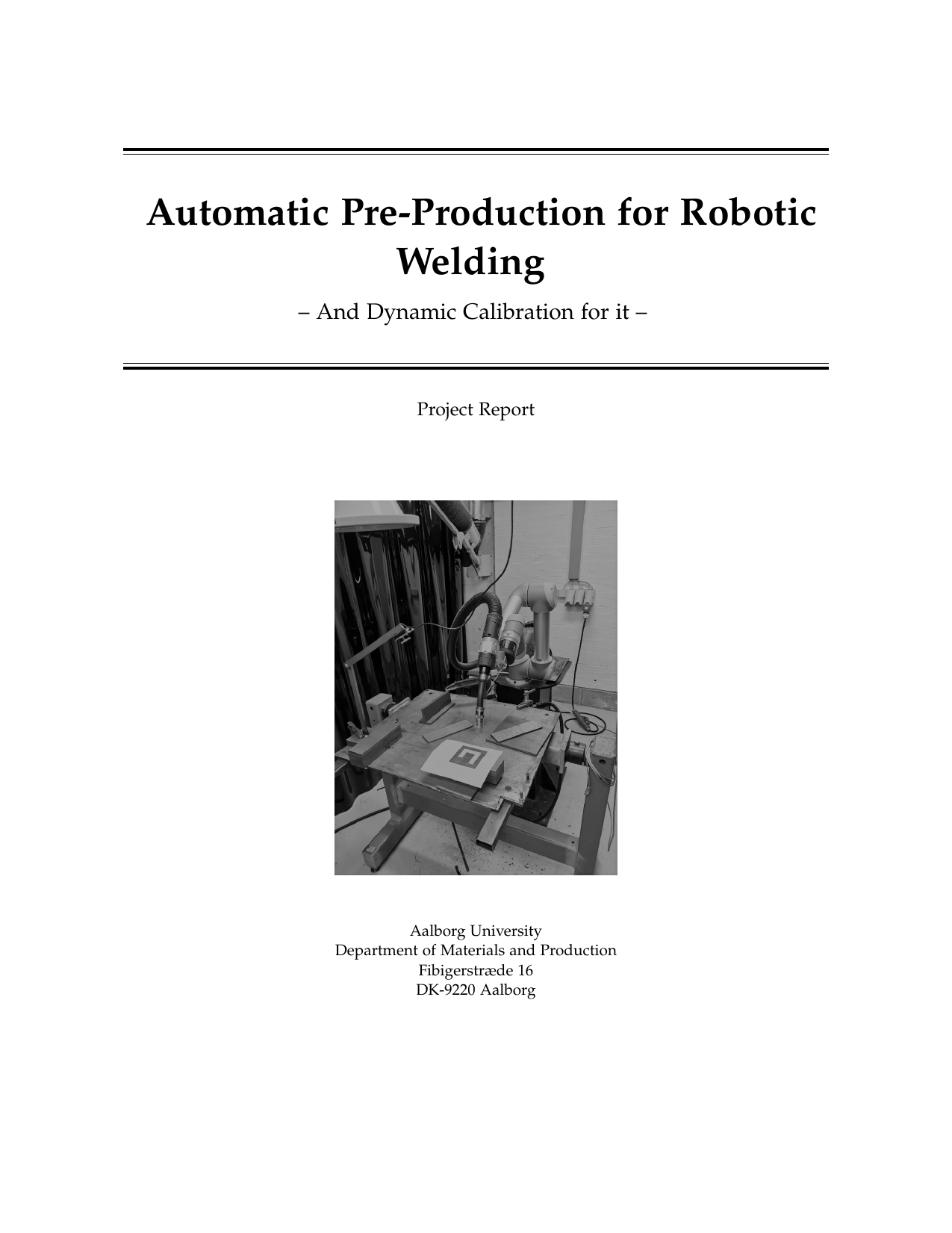
Automatic Pre-Production for Robotic Welding: And Dynamic Calibration for it
Author
Term
4. term
Education
Publication year
2022
Submitted on
2022-06-02
Pages
70
Abstract
This report has been made in collaboration with Sjørring Maskinfabrik and PDM Technology. It explores the issues concerning robotic welding and how automatic pre-production of it can facilitate more robotic welding in low volume, high variance productions. An automated offline programming model is proposed and examined with the specific type of production companies in mind for how to automatically go from a CAD model of a product to having a robot welding on a workpiece. The model utilises the concept of elementary operations which holds information about how to weld a small part of the product. Further work is conducted into how this company type will cope with introducing more robotic welding without using fixtures. A sensor system is proposed consisting of a camera and ArUco markers to dynamically and automatically calibrate the robot to a workpiece. Calibration of the camera is performed to acquire specific camera parameters later used for pose estimation of an ArUco marker. The dynamic calibration using a marker works, but is, as of the results in this report, not precise enough to be used for robotic welding yet.
This report has been made in collaboration with Sjørring Maskinfabrik and PDM Technology. It explores the issues concerning robotic welding and how automatic pre-production of it can facilitate more robotic welding in low volume, high variance productions. An automated offline programming model is proposed and examined with the specific type of production companies in mind for how to automatically go from a CAD model of a product to having a robot welding on a workpiece. The model utilises the concept of elementary operations which holds information about how to weld a small part of the product. Further work is conducted into how this company type will cope with introducing more robotic welding without using fixtures. A sensor system is proposed consisting of a camera and ArUco markers to dynamically and automatically calibrate the robot to a workpiece. Calibration of the camera is performed to acquire specific camera parameters later used for pose estimation of an ArUco marker. The dynamic calibration using a marker works, but is, as of the results in this report, not precise enough to be used for robotic welding yet.
Keywords
Documents
